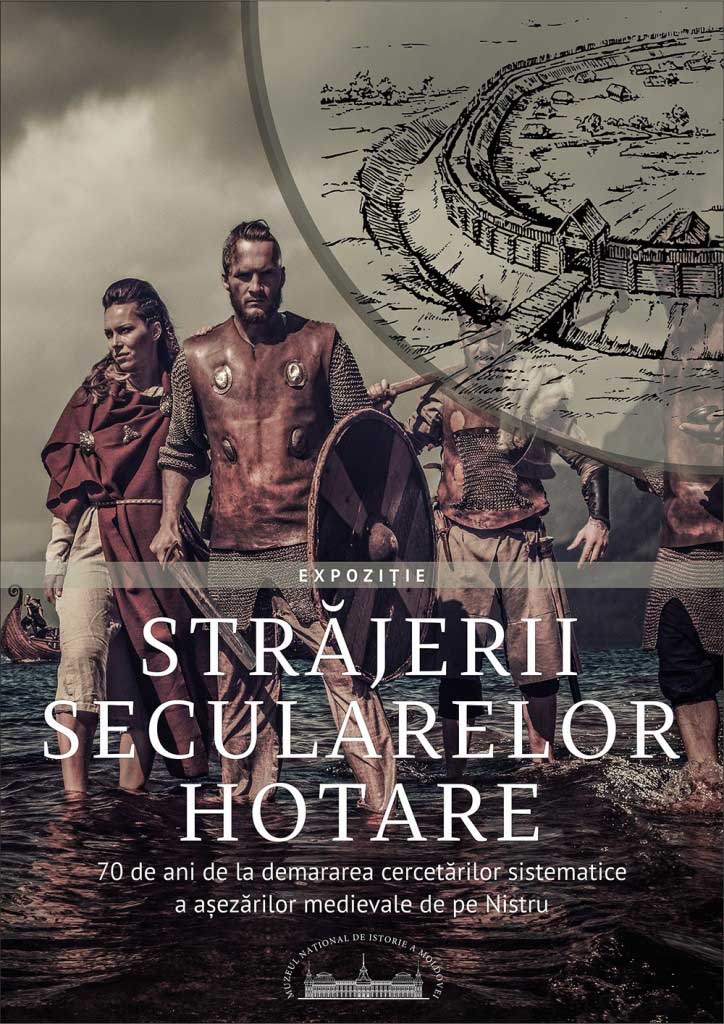 2020 marks the 70th anniversary of the beginning of systematic archaeological research of the early medieval fortified settlements between the Răut and the Dniester. The investigations carried out in the sites of Echimăuți, Alcedar, Lucășeuca, Țareuca, Rudi - Farfuria Turcească, Poiana-Cunicea, Tătărăuca Nouă-Germănărie and others made it possible to reconstruct the historical and archaeological realities of the 9th-11th centuries AD. It was discovered that these complex strategic systems, consisting of a ditch, a rampart made of earth and wood, endowed with strong palisades, were built in the context of imminent threat from the outside and that they could be built by strong, well-cohesive political structures at the regional level.
2020 marks the 70th anniversary of the beginning of systematic archaeological research of the early medieval fortified settlements between the Răut and the Dniester. The investigations carried out in the sites of Echimăuți, Alcedar, Lucășeuca, Țareuca, Rudi - Farfuria Turcească, Poiana-Cunicea, Tătărăuca Nouă-Germănărie and others made it possible to reconstruct the historical and archaeological realities of the 9th-11th centuries AD. It was discovered that these complex strategic systems, consisting of a ditch, a rampart made of earth and wood, endowed with strong palisades, were built in the context of imminent threat from the outside and that they could be built by strong, well-cohesive political structures at the regional level.
The exhibition shows some of the discoveries in the northeast of the Prut-Dniester territory, represented by fortified round settlements built a fundamentis, "long houses", iron melting furnaces, craft workshops for making tools and weapons of iron, bone and horn or for the manufacture of silverware, burial mounds with cremation graves, hoards of tools and weapons, battle axes, hoards of silver objects containing Islamic and Byzantine coins, silver ingots, Scandinavian pendants with animalistic ornaments, including that of Gnezdovo type, iron weights in bronze foil, balance scale, miniature iron or bronze axes, amber beads, and so on. Some of these materials are presented in the basic exhibition or in the museum exhibition Treasury, others are kept in the collections of some museums in the Republic of Moldova or abroad.
The appearance, during this period, of defensive systems in the area between the rivers of Răut and Dniester, as well as in northern Bukovina, was associated with the penetration of Scandinavians into the region, who followed on the old trade route from the Baltic Sea to the Black Sea, to the Balkans, to Byzantium, Constantinople or Baghdad, along the Vistula and Dniester rivers, also called "the second trade route from the Varangians to the Greeks". The fortified settlements were places of rest for merchants or intermediate military camps, which over time became prosperous military, administrative, craft and trade centers, real medieval proto-cities, to the construction of which the local Romanian population contributed. Apparently, they were destroyed by the invasion of the Turanian nomads at the end of the 11th century.
The archaeological artifacts that form the basis of the exhibition are originals and only some of them have been subjected to restoration and conservation. Several battle axes are part of Mr. Victor Borshevich's private collection. The exhibition is complemented by a model of the fortified settlement from Echimăuți, made in the 1960s, several reconstructions of tools and weapons, and various and images that illustrate the subject matter.
The exhibition, through the artifacts displayed, contributes to the increase of the educational and cultural potential of the museum activities, to the promotion of the values of national heritage in the international context.
Curator: Ion Tentiuc, PhD

















































